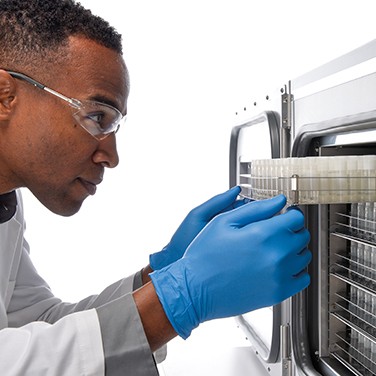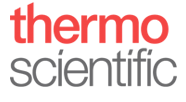Preparing Samples for Long-Term Cryogenic Storage
How can controlled-rate freezers be used to prepare samples and therapies for long-term cryogenic storage?
The term “cryopreservation” is derived from the Greek word kryos, which means cold. Practically, cryopreservation is a method for preserving biological samples in a vitrified state.
Rapid freezing prevents the formation of ice crystals by chilling the sample to the amorphous ice phase while circumnavigating the hexagonal ice phase. Because cryopreservation temperatures are so low, the water inside cells in a sample is vitrified or removed by osmosis and stopping metabolic processes.
Advantages of sample cryopreservation:
- Reduced risk of microbial contamination or cross-contamination
- Less risk of morphological and/or genetic changes
- Techniques are well established and methods and outcomes are well documented
Cryopreservation is effective but not trouble free. Researchers must determine optimal conditions for the viability and recovery of their samples.
What Are the Freezing Phases?
ISBER guidelines state that LN2 cryopreservation is optimal for long-term specimen storage. These systems offer storage below the glass transition phase temperature of -132°C. In this case, the term “glass” refers to a liquid that is too cold to flow.
Nucleation is the onset of the change from liquid to crystalline. It involves the progressive separation of ice from the unfrozen part of the solution. The solute concentration increases as water separates as ice. This change is also associated with an energy change. The localized increase in temperature is called the latent heat of fusion, which evolves as the solution reaches the equilibrium freezing point.
Best Practices
While storage below the glass transition temperature is important, properly preparing samples for storage at very low temperatures is equally important. When the rate at which a specimen is frozen is controlled, it fosters greater cellular viability when the sample is removed from its cryogenically frozen state.
The International Society for Biological and Environmental Repositories (ISBER) publishes the ISBER Best Practices: Recommendations for Biorepositories Fourth Edition, which offers guidelines for sample preservation. In 2019, the ISBER Best Practices Addendum: Liquid Nitrogen-Based Cryogenic Storage of Specimens was also published.
These guidelines comprise the most effective evidence- or consensus-based practices for managing biological and environmental specimen collection, long-term storage, retrieval, and distribution and support the availability of high-quality research specimens.
Thermo Scientific CryoMed Controlled-Rate Freezers
Controlled-rate freezers can help reduce the stress on samples during the freezing and vitrification processes.
CryoMed Controlled-Rate Freezers have six factory-set freezing profiles and users can create up to 14 custom profiles. For samples and therapies, CryoMed users can take advantage of a new pre-set profile that has an end-temperature of -140°C.
This profile, labeled Pre-Set Profile #3, controls sample freezing through the glass transition phase (when amorphous ice can form). It creates a 1°C/minute cooling rate from nucleation to -45°C and a 10°C/minute cooling rate to the final temperature of -140°C. It is commonly used for hemopoietic stem cells in volumes from 65 to 100 mL.
Long-Term Sample Storage
Choose from two LN2 cryogenic freezer platforms for long-term sample storage:
- Thermo Scientific CryoExtra High-Efficiency LN2 Storage Tanks
- Thermo Scientific CryoPlus LN2 Storage Devices
To choose the right platform, consider the number of samples being stored and whether liquid or vapor phase liquid nitrogen will be used.
- CryoExtra is preferred for larger numbers of samples stored in vapor phase; four capacity options accommodate between 19,500 and 93,000 vials (2 mL)
- CryoPlus is preferred for fewer samples and accommodates both liquid or vapor phase storage; 2 mL vial capacity ranges from 6,318 to 39,000
Thermo Scientific CryoMed Controlled-Rate Freezers, used in combination with CryoExtra or CryoPlus platforms, provide a workflow solution for laboratories or biorepositories with reliable sample preparation and cryogenic storage.

